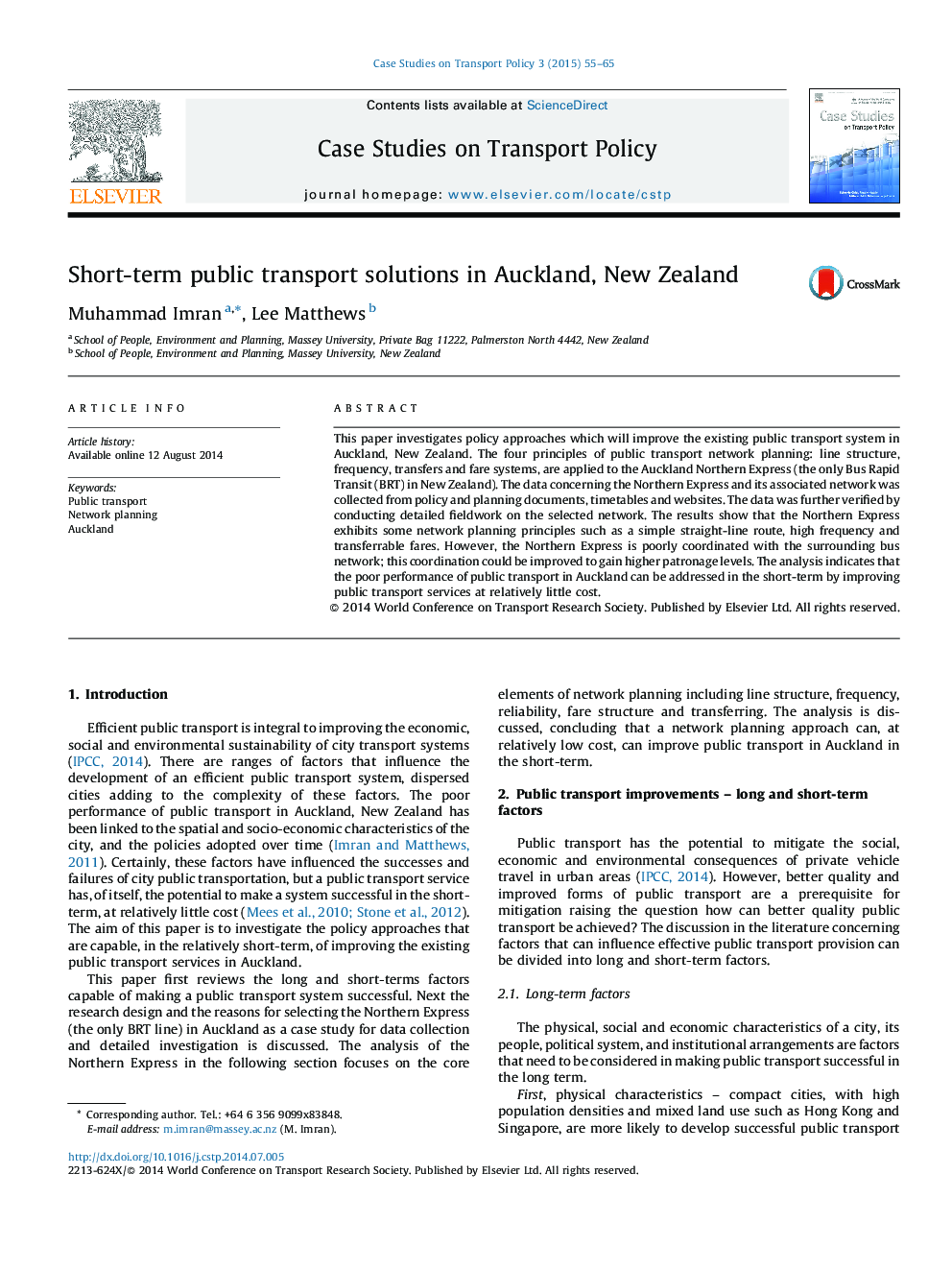| Article ID | Journal | Published Year | Pages | File Type |
|---|---|---|---|---|
| 250676 | Case Studies on Transport Policy | 2015 | 11 Pages |
•We applied principles of network planning to the Auckland Bus Rapid Transit (BRT).•BRT exhibits simple and dedicated infrastructure and high frequent services.•The network planning approach opens multi-destination travel in the city.•The “network effect” allows BRT and feeders to be provided in low-density suburbs.•Network planning can improve public transport patronage in Auckland at relatively little cost.
This paper investigates policy approaches which will improve the existing public transport system in Auckland, New Zealand. The four principles of public transport network planning: line structure, frequency, transfers and fare systems, are applied to the Auckland Northern Express (the only Bus Rapid Transit (BRT) in New Zealand). The data concerning the Northern Express and its associated network was collected from policy and planning documents, timetables and websites. The data was further verified by conducting detailed fieldwork on the selected network. The results show that the Northern Express exhibits some network planning principles such as a simple straight-line route, high frequency and transferrable fares. However, the Northern Express is poorly coordinated with the surrounding bus network; this coordination could be improved to gain higher patronage levels. The analysis indicates that the poor performance of public transport in Auckland can be addressed in the short-term by improving public transport services at relatively little cost.
